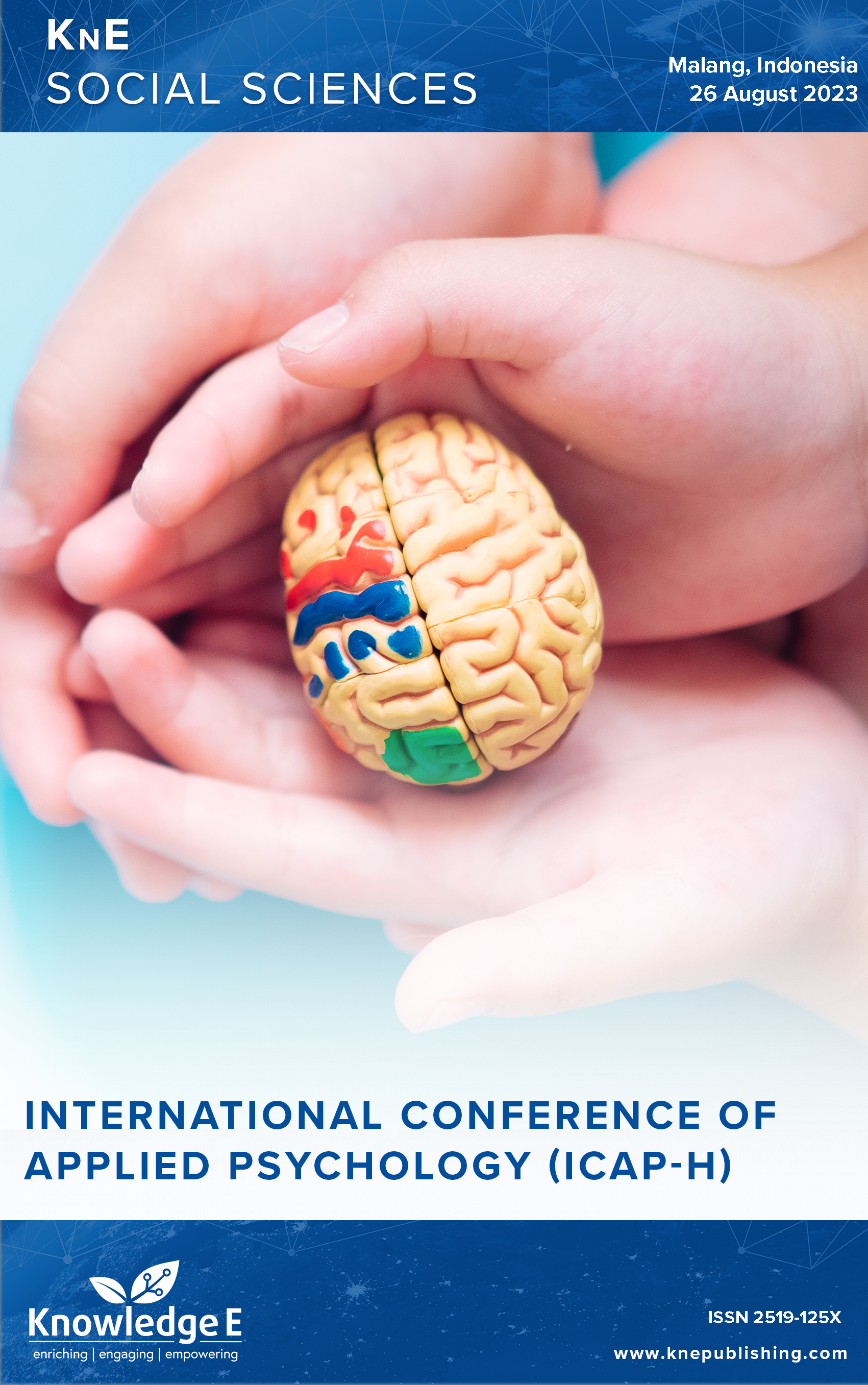Adaptation of the Indonesian Version of the Children's Hope Scale
DOI:
https://doi.org/10.18502/kss.v9i5.15179Abstract
Hope in children has an important role to increase many positive aspects in life. Hope in children can also increase academic success. There has not been much research on hope in children in Indonesia. Snyder et al. (1997) made two hope measuring tools, the first is hope for adults called the Adult Hope Scale (AHS) and hope for children called the Children’s Hope Scale (CHS). AHS has been adapted into Indonesia by Novrianto and Menaldi (2022). Meanwhile, CHS has not yet been adapted into Indonesia. The purpose of this study is the adaptation of the Children’s Hope Scale into Indonesia with the Indonesian population as the subject. The research subjects were aged between 8 and 16 years according to the theory by Snyder et al. (1997), male and female, totaling 297 children. Data analysis was done using confirmatory factor analysis (CFA) with the help of Jamovi software. The results of the analysis showed that the Children’s Hope Scale can measure the hope of children in Indonesia (RMSEA = 0.15 [moderate fit]; SRMR = 0.04; TLI = 0.91; CFI = 0.94).
Keywords: children’s hope, children’s hope scale, hope
References
Gilman R, Huebner ES, Furlong MJ. Handbook of positive psychology in school. Routledge. New York: Taylor & Francis e-Library; 2009.
Snyder CR. Hope theory: Rainbows in the mind. Psychological Inquiry. 2002;13(4):249–275. DOI: https://doi.org/10.1207/S15327965PLI1304_01
Mullin A. Children’s hope, resilience and autonomy. Ethics and Social Welfare. 2019;13(3):230–243. DOI: https://doi.org/10.1080/17496535.2019.1588907
Chawla L. Childhood nature connection and constructive hope: A review of research on connecting with nature and coping with environmental loss. People and Nature. 2020;2:619–642. DOI: https://doi.org/10.1002/pan3.10128
Nunn EK. The role of hope with school aged children. East Carolina University; 2016.
Snyder CR, Cheavens J, Sympson SC. Hope: An individual motive for social commerce. Group Dynamics: Theory, Research, and Practice. 1997;1(2):107–118. DOI: https://doi.org/10.1037//1089-2699.1.2.107
Snyder CR, Harris C, Anderson JR, Holleran SA, Irving LM, Sigmon ST, et al. The will and the ways: Development and validation of an individual-differences measure of hope. Journal of Personality and Social Psychology. 1991;60(4):570–585. DOI: https://doi.org/10.1037//0022-3514.60.4.570
Snyder CR, LaPointe AB, Crowson JJ, Early S. Preferences of high- and low-hope people for self-referential input. Cognition and Emotion. 1998;12(6):807–823. DOI: https://doi.org/10.1080/026999398379448
Snyder CR. To hope, to lose, and to hope again. Journal of Personal and Interpersonal Loss. 1996;1(1):1–16. DOI: https://doi.org/10.1080/15325029608415455
Novrianto R, Menaldi A. The adult dispositional hope scale (AHS) pada populasi Indonesia: Struktur faktor dan properti psikometris. J Psikol. 2022;18(2):163–170. DOI: https://doi.org/10.24014/jp.v18i2.18273
Kerlinger FN, Lee HB. Foundations of behavioral research. Australia: Wadsworth; 2000. 1–94 p.
Beaton DE, Bombardier C, Guillemin F, Ferraz MB. Guidelines for the process of crosscultural adaptation of self-report measures. Spine (Phila Pa 1976). 2000;25(24):3186– 3191. DOI: https://doi.org/10.1097/00007632-200012150-00014
Aiken LR. Three coefficients for analyzing the reliability and validity of ratings. Educational and Psychological Measurement. 1985;45:131–142. DOI: https://doi.org/10.1177/0013164485451012
Azwar S. Penyusunan Skala Psikologi. Yogyakarta: Pustaka Belajar; 2019.
Hooper D, Coughlan J, Mullen MR. Structural equation modelling: Guidelines for determining model fit. Electronic Journal of Business Research Methods. 2008;6(1):53–60.
Hu L, Bentler PM. Cutoff criteria for fit indexes in covariance structure analysis: Conventional criteria versus new alternatives. Structural Equation Modeling: A Multidisciplinary Journal. 1999;6(1):1–55. DOI: https://doi.org/10.1080/10705519909540118
Dixson DD. Hope across achievement: Examining psychometric properties of the children’s hope scale across the range of achievement. SAGE Open. 2017;7(3):1–11. DOI: https://doi.org/10.1177/2158244017717304
Savahl S. Children’s hope in South Africa: A population-based study. Frontiers in Psychology. 2020;11( June):1–7. DOI: https://doi.org/10.3389/fpsyg.2020.01023

